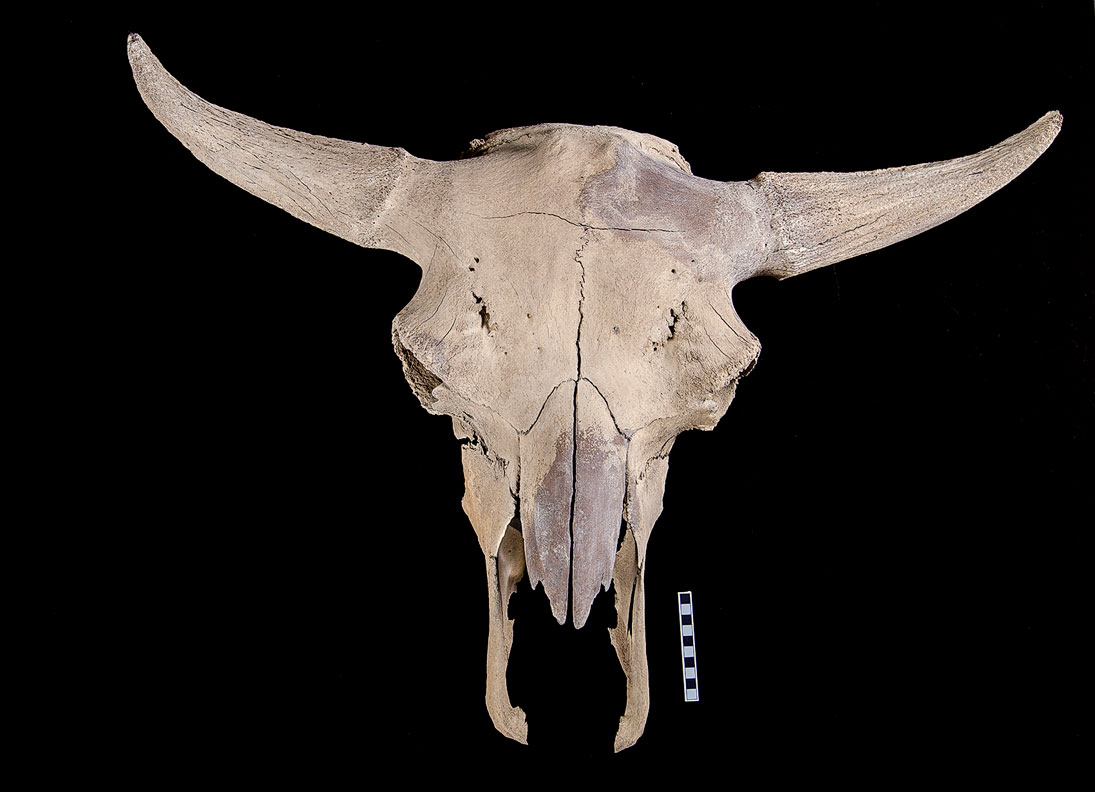Bison died after becoming mired in a lake
A young bison, part of whose remains were unearthed five years ago in Porter Creek, died around 5,400 years ago, says newly published information.
By Whitehorse Star on December 18, 2017
A young bison, part of whose remains were unearthed five years ago in Porter Creek, died around 5,400 years ago, says newly published information.
In 2012, the discovery of the partial ancient steppe bison skeleton sparked significant public interest.
Now, the excavation results are being published – and they tell the story of a time long past, the Yukon government said today.
The excavation took place over two days with the help of local community volunteers after the remains were found during a house construction project.
Since then, researchers from across North America have come together to examine this ancient part of Whitehorse history.
They learned the young bison perished approximately 5,400 years ago after being mired down in a small lake.
At the time, the area was covered in white spruce forest.
This suggests the northern steppe bison population survived the mass extinction event at the end of the ice age, living longer than previously thought.
There was no evidence this bison was hunted by humans.
However, archaeological discoveries at Fish Lake and alpine ice patches show that bison have long been important animals in the traditional territories of southern Yukon First Nations.
“This discovery was possible because of the community coming together,” Tourism and Culture Minister Jeanie Dendys said in a statement.
“Partnerships with Yukon First Nations and support from local residents allowed us to preserve these unique traces of an ancient world.
“We appreciate the support of the Kwanlin Dün First Nation and Ta’an Kwäch’än Council in this research and for enabling excavation in their traditional territories.
“Thanks also go to Craig and Sandy Duncan for calling the Heritage Resources Unit to investigate this discovery,” Dendys added.
“Every fossil discovery provides a window to the past and shines new light on life in the Yukon from long ago,” said Kwanlin Dün First Nation Chief Doris Bill.
“Finding this specimen must have been quite the surprise for the Duncans while they were building their home. I applaud their mindful approach to the find and their decision to involve the Heritage Resources Unit.”
Chief Kristina Kane of the Ta’an Kwäch’än Council said it is “supportive of this palaeontological research that was conducted respectfully upon our traditional territory.
“We are interested in the discovery of specimens and archaeological artifacts that provide tangible evidence of life and our culture from many years ago.”
The new findings are the subject of an article entitled A middle Holocene steppe bison and palaoenvironments from the Versleuce Meadows, Whitehorse, Yukon, Canada.
It was recently published in the Canadian Journal of Earth Sciences by NRC Research Press.
Public engagement and fossil donations to the Yukon Palaeontology Program allow researchers to continue to uncover the Yukon’s past.
Partnerships with Yukon First Nations, placer miners, and other community members are vital to furthering research in the territory, the government pointed out.
Steppe bison first crossed the Bering land bridge around 160,000 years ago, making their way from Europe and Asia to North America. They are now extinct.
Bison seen in the Yukon today are not direct descendants of these ancient animals.

Comments (3)
Up 2 Down 0
Josey Wales on Dec 20, 2017 at 12:02 pm
Hey mo....indeed there is, as this place is the headquarters of pandering.
no stop in sight only perpetuated myths state sanctioned.
And PSG, when that day comes?
It will get buried deeeeeeeep...so as to not offend.
You are right science does rock, unfortunately bogus studies have made the sciences so yesterday in this fluid insane world.
Up 3 Down 0
My Opinion on Dec 19, 2017 at 10:47 pm
What did the FN's have to do with it? It was found on private land. A whole lot of pandering going on here.
Up 2 Down 0
ProScience Greenie on Dec 19, 2017 at 3:06 pm
Cool story. Science rocks.
Hard to say if the people here 5400 years ago were the ancestors of today FN people. Time and science will tell.